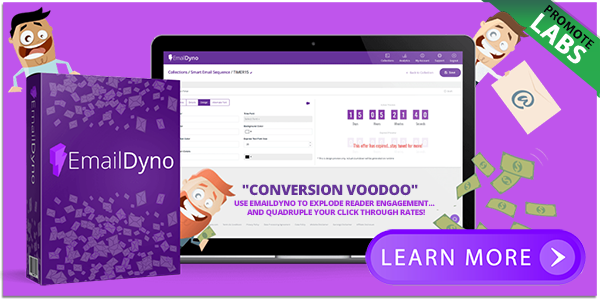According to a recent study, which examined a huge swath of literature on Small and…

One simple approach to make your niche content stand out from the crowd
In 2013 Alex Turnbull from Groove wrote a post about what's made Groove's content marketing strategy so successful (The post is actually titled “How We Grew Our Blog to 5,000+ Subscribers in Five Weeks”). One of the things he mentions that they did right (though not initially—they've learned from mistakes, too) was finding a unique angle for their niche content.
You must tell your own story to stand out. Learn as much as you can from successful blogs, but don’t try to copy their angle. Take the strategies that helped those blogs grow, and apply them to the voice and content that makes you unique.
Groove's unique angle was to blog about their journey as they grew their startup. Rather than having all the answers, they started before they were ready, and shared what they learned along the way.
We all want to find that perfect angle that makes our content unique. But it's hard to know where to start. In my first content marketing job I worked with a startup that wasn't sure how to reach their audience. I wasn't sure, either, so we changed our strategy constantly. Almost every month we had another meeting to choose a new strategy, a new sub-audience to focus on, new topics to write about. We never gave anything a chance for long enough to see any results.
Although I learned from that experience that sticking with one strategy for a while is important for testing whether it's working, I still find it difficult to decide where my focus should be sometimes.
Even if you have a good idea of who your audience is, they're no doubt interested in lots of different things. And so are you. This gives you lots of options for topics to write about.
It's tempting to give in to all the different options when you're looking for new ideas constantly to keep up with your publishing schedule.
But I suggest you choose just one topic or area of interest and focus on it.
Why pick just one?
I know, I know. Focusing is scary. Saying yes to one thing means saying no to lots of other things, and that's a scary idea. What if you pick the wrong focus? What if you want to change your mind later? What if it works well, but one of the other options could have worked better?
Saying no to other options so you can focus doesn't mean saying no forever.
It’s not forever, it’s just for now. You’re not committing to this for the rest of your life. It’s the handle to bring people on board. — Sean McCabe
It's not forever. That's a really important thing to keep in mind, because it makes it a lot less scary to say no to some options now so you can focus, if you know you can always come back to those other options and try them later.
If you're still not convinced, let's look at why choosing just one topic or area of focus is so important.
It helps people understand what you're about
Designer Sean McCabe has a great way of explaining this. He says that for anyone we don't know well, we tend to put them in a box in our minds—subconsciously. We need to do this, because we can't process all the complexity of every human being we come across. For anyone outside our small circle of friends, family, and colleagues, we have a superficial idea of them in our heads, because that's how we manage to process the huge numbers of people we come in contact with.
So people are going to put you, your team, and your company in a box. They can't help it, and they don't even do it consciously, but they're going to do it.
By choosing a focus, you're effectively choosing which box you want to be in. You're helping out your audience by telling them how to categorise you. The faster they can categorise you, and the more clearly, the easier it will be for them to remember you.
Focusing lets you do one thing really well
Rather than being a jumble of different ideas done half-heartedly, because you don't know if any of them will work out, focusing on just one thing lets you really knock it out of the park.
You have a choice: The choice is to be known for one of them or to be known for none of them. That’s the harsh truth. — Sean McCabe
When you focus, you give yourself the freedom to go all-in on something. You can go deep, rather than wide, and beat out everyone else at this one particular thing. You can become the expert in this unique aspect or angle.
It can also be, perhaps counterintuitively, easier to find new ideas when you focus. I've found that the more specific my focus is, the more I find interesting nooks and crannies to explore within that niche. When I'm going for a more broad approach, however, I tend to flounder with all the different options available, and have more trouble coming up with new ideas.
Look at a blog like Buffer, for instance. Several years in, and the Buffer team is still coming up with new social media topics to write about every week. And their audience keeps coming back for more, because they've set themselves up as experts in that niche.
You can take a loyal audience with you
Once you've built up a loyal audience and developed your expertise in one area, there's no rule that says you can't expand into another area. Focusing doesn't mean you'll only ever do that one thing forever. It just means you'll focus on being great at that one thing right now.
If you decide later on that you want to expand your focus area, add a new focus, or switch entirely, you can take your audience with you.
A great example of this comes from Sean McCabe's career. As a designer, Sean wasn't getting as much visibility as he'd like, until he chose a focus. He went all-in on hand lettering, and suddenly his audience started to grow. He became well-known, started getting more work, and increased his rates. Focusing helped Sean's audience to get “what he was all about” immediately. His Instagram and Dribbble profiles were focused on hand lettering, so it was obvious to viewers what he did.
You want people to go to your grid/feed/stream and know immediately what they’re going to get. Following is a form of subscription. People subscribe to something because they want to get more of the same. — Sean McCabe
After a while Sean wanted to branch out. He still does some lettering, but his main focus now is on helping other designers learn more about business. When Sean moved into this new focus area, he took most of his hand lettering audience with him. They'd had long enough to get to know him that switching focus didn't confuse them.
Rather than being someone who “does web design, hand lettering, some tattoo designs, teaches people about business” and any number of other things, Sean contented himself to being known as “that hand lettering guy”. Once people knew him well enough, he became “that business guy who used to do hand lettering”.
A focus gives your audience an anchor. You can change your focus or add new ones once you've given them long enough to anchor you in their minds around your first focus.
Choosing a focus area
If you're already creating content that falls into a few different topic areas, choosing a focus is simple (though not easy). Choose the topic that provides you with the most rewards—whether that's new customers, a bigger audience, or more engagement—and commit to it for a while.
In time you'll be able to collect enough data to test whether you've chosen well, or you need to try something new.
Perhaps the hardest part is committing to your focus area for long enough to build up that data. But if you give up too early, as I found in my previous job, you'll end up with lots of false starts and no results to show for all your hard work.
One last note: once you've chosen what to focus on, you'll want to brainstorm lots of new ideas to keep the content flowing.





